#Bona Sforza
Text
BATTLE FOR 3rd PLACE


time to decide which royal consort will snatch the podium from the jaws of defeat!
13 notes
·
View notes
Photo

“I find it fascinating that the Queen of Poland, Bona Sforza (who was from the Sforza family in Milan) knew Hurrem Sultan of the Ottoman Empire (who was born in the Kingdom of Poland).” - Submitted by Anonymous
39 notes
·
View notes
Text

Dorotea Gonzaga (6 December 1449 – 20 April 1467) was a Duchess Consort of Milan. She was the daughter of Ludovico III Gonzaga, Marquess of Mantua and Barbara of Brandenburg. In 1466, Dorotea married Galeazzo Maria Sforza, but she died in 1468. Her husband was remarried to Bona of Savoy.
#dorotea Gonzaga#galeazzo maria sforza#cate blanchett#donne della storia#donne nella storia#donneitaliane#donne italiane#women of renaissance#renaissance italy#renaissance women#italian renaissance#renaissance#gonzaga#barbara of Brandenburg#bona sforza#15th century#women of history#women in history#ludovico iii gonzaga#perioddramaedit#history#edit#history edit#rinascimento#mantua#milan#house sforza#bona of savoy#aesthetic#historyedit
39 notes
·
View notes
Text
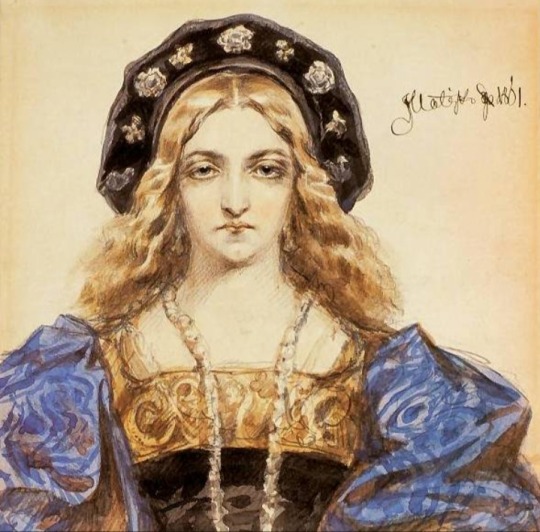
Bona Sforza d'Aragona on a drawing by Jan Matejko. She was italian princess, polish queen, the second wife of Zygmunt the Old, the mother of Isabela Jagiellonka, Sigismund August, Sophie Jagiellonka, Anne Jagiellonka and Catherine Jagiellonka. She died poisoned by her courtier - a Habsburg spy
#Bona Sforza#Polish Queen#italian princess#Zygmunt the Old#drawing#artwork#jan matejko#Sophie Jagiellonka#Catherine Jagiellonka#Anne Jagiellonka#Isabel Jagiellonka#Polish renaissance#renaissance#Poland#Italy#history#polish history#Sigismund August#Zygmunt August#women in history#16th century#italian history
38 notes
·
View notes
Text
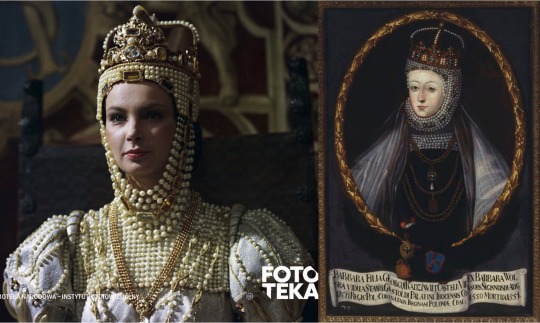




Some recoveries of historical portraits come from the Polish film Epitafium dla Barbary Radziwillówny in 1983 and the Polish TV drama Królowa Bona in 1980.
#barbaryradziwiłłówny #królowabona #bonasforza #jagiellonowie #polish #polishwoman #elizabethofaustria #renaissance #costume #costumedesign #costumejewelry #historicalfashion
#Barbary Radziwillówny#Epitafium dla Barbary Radziwillówny#Królowa Bona#Bona Sforza#the renaissance#Elizabeth of Austria#costumes#costume design#costume drama#history of fashion#historical costume#16 century#polish
35 notes
·
View notes
Text
Many of you, guys, perceive Lithuania the same way English colonizers perceived Indian women in sari. Shall I tell you this story?
#it's not like I mind ships or national clothes but i wish there were more different perspectives on actual history and actual culture#for example people who draw India or Kazakhstan#every time it's just their national clothes. which is okay but#i wish they drew India as a YT mathematician because yk#Indians are veeeery famous for explaining difficult problems easily#India is not their folk clothes only and perceiving it as such is no different from imperialistic thinking#same with Qazaqstan. you guys know they don't dress like that on daily basis right?#you guys know they're the richest Asian country right?#I've never seen people drawing e.g. Lithuania just interacting with any other country except the popular ships#where are my jokes about India being a second great grandparent to Lithuania???#Lithuanian language is considered to be the closest to Sanskrit. also Lithuania loves Krishnaits#come on man use your imagination and ability to read news and connect the dots it's not that hard and it's not forbidden#where is Lithuania interacting with England?? they have lots of business together.#where is Lithuania listening to USA complaining about UK?? it's such a wide space for jokes and funny jokes#which i don't draw because i have studies#where is Lithuania interacting with Italy? google Bona Sforza#you guys perceive Lithuania like some kind of isolated colony. and you do the same shit with Ukraine and Belarus and Latvia and-
11 notes
·
View notes
Text




Green version of fantasy note for collectors polish Queen Bona Sforza + version with perforated word: CANCELED.
#banknot#banknote#fantazyjny#fantasy#Bona#Sforza#canceled#not circulated#nieobiegowy#for collectors#kolekcjonerski#fancy#note#Polonaise#Polonia#Polska#Poland
2 notes
·
View notes
Text

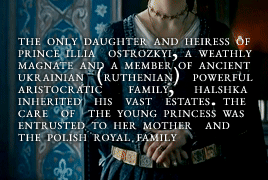


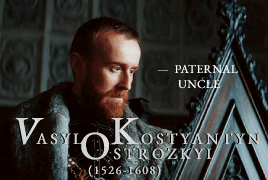
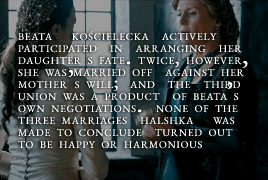

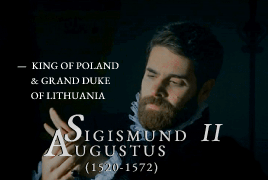
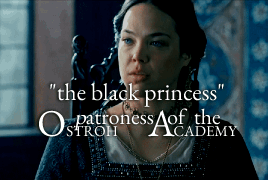
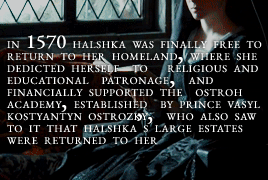
— 19th of NOVEMBER 1539, birth of HALSHKA (Elyzaveta, Elżbieta) OSTROZKA (OSTROGSKA), "the Black Princess"
Born on feast day of St. Elizabeth, she was christened Elżbieta, Elyzaveta, or Halshka (under this latter name she came down into history). Halshka’s father was Prince Illia Ostrozkyi (Ostrogski), a weathly magnate and a member of ancient Ukrainian (Ruthenian) powerful aristocratic family, that traced their origins back to the semi-legendary prince Rurik. The representatives of this family held great offices in the Grand Duchy of Lithuania and the Kingdom of Poland. At the royal court in Krakow, Illia Ostrozkyi met Beata Kościelecka, a notable beaty, and, according to the rumours, an illegitimate daughter of King Sigismund I of Poland. The couple was married in 1538, but their happiness did not last long: Illia was wounded during the tournament, and died soon after, in August 1539. In November Beata gave birth to their only child, a daughter.
According to her father’s will, Halshka stood to inherit half of his vast estates (including the cities of Ostroh and half of Rivne, along with many more), that were to be under her mother’s control until the heiress reached adulthood. Beata was also to keep control of her husband’s younger half brother’s Vasyl’s inheritance. The latter, who was to become powerful magnate and patron of religion and education under the name of Vasyl Kostyantyn Ostrozkyi (Ostrogski), soon took measures to retain the power of his estates his estates and rule them on his own. In his testament, Illia had also entrusted the care of his daughter to the King Sigismund, his wife, Queen Bona Sforza, and their son, Sigismund II Augustus.
Since Halshka was the recipient of such a magnificent inheritance, it soon became a matter of almost national importance to find her a suitable husband. Here, the interests of Lithuanian and Polish nobility also clashed. Suitors, eager for wealth and influence were not slow to appear. Among them were Dymitr Sanguszko, starost of Kaniv, Cherkasy and Zhytomyr, Jan Mielecki, voivode of Podilia, and even, according to a legend, Dmytro Vyshnevetskyi, the famous founder of the first stronghold on the Khortytsya island. Halshka’s uncle, Vasyl Kostyantyn Ostrozkyi, who was gradually growing in power, supported the candidature of Dymitr Sanguszko, while both the King of Poland and Beata Kościelecka were against him. Sanguszko married Halshka all the same, but was soon sentenced to infamy (deprivation of noble status and threat of death sentence if he did not agree to annul his marriage), and murdered.
The next match for Halshka, proposed by the King Sigismund II, was Łukasz Górka, voivode of Poznań, Kalisz, Łęczyca and Brześć Kujawski. Beata Kościelecka had at first agreed to it but later changed her mind towards this marriage. Once again, her protests availed nothing: the wedding took place in the presence of the royal family in Warsaw. Halshka was told that her mother agreed to the marriage, but when she learned that this was not the case, Princess appealed to the royal council to annul it, and fled to Lviv with Beata.
Halshka’s third union was orchestrated by Beata. This time the groom was Prince Siemion Slutski, who, for the sake of conspiracy, had to meet his bride in a monastery disguised as beggar. The couple wed in 1559, but this marriage was also short-lived. Though neither Halshka nor Beata regarded Łukasz Górka as the Princess’s true husband, Górka himself was evidently of different opinion. He rushed to Lviv with arms and took Halshka captive. Prince Siemion Slutski died in 1560. Górka placed Halshka – virtually a prisoner – in the castle of Szamotuły, near Poznań, where she spent fourteen years until his death, isolated from the world. It is said that during her imprisonment Halshka was wearing the black mourning robes, which was why she got nicknamed “the Black Princess”.
After the death of Łukasz Górka in 1573, Halshka Ostozka was finally free and able to return to her homeland. During the reign of Henri Valois as the King of Poland, Halshka’s uncle, Vasyl Kostyantyn Ostrozkyi saw to it that the estates, left to her by her father, were returned to the Princess. The rumours that Halshka has got insane during her confinement in Szamotuły, do not seem to be true, as in her later years she actively participated in the works of patronage, attended court hearings, and financially supported a prominent educational institution – the Ostroh Academy, established by Prince Vasyl Kostyantyn Ostrozkyi. She died in 1582, leaving her estates to Vasyl Kostyantyn.
Halshka Ostozka was said to be a remarkable beauty, but sadly none of her life portraits survived. She is featured in famous painting Kazanie Skargi (Sermon of Piotr Skarga, painted in 1862-64) by Jan Matejko, where Halshka is depicted as a young richly dressed woman, covering her forehead with her hand in sad contemplation; she is placed a little behind Anna Jagiellonka, sister to Sigismund II, and once Queen of Poland.
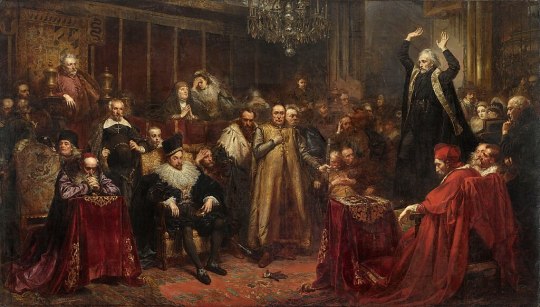
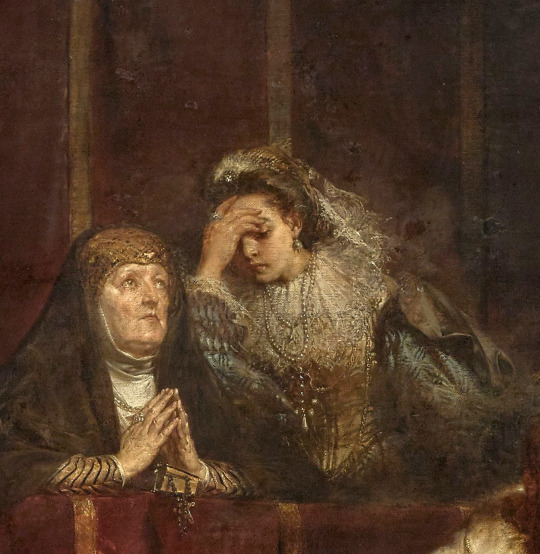

Another renown portrait of Halshka Ostrozka was painted in 1996 by Ukrainian artist Yurii Nikitin, who did a research among the portraits of Ostrozky family. The portrait features a young serious woman with delicate features, dressed in strict black gown, adorned with rich jewels, and a white headwear that covers her hair and neck closely. In her hand she is holding a book – most likely a Holy Scripture.
#historyedit#history#halshka ostrozka#elzbieta ostrogska#ukrainian history#polish history#perioddramaedit#sigismund i of poland#sigismund ii augustus#vasyl kostyantyn ostrozkyi#jan matejko#yurii nikitin#perioddramagif#women in history#weloveperioddrama#gifshistorical#tusereliza#userfefa#perioddramasource#my edit#not to be unhumble but i'm so proud of myself for making this edit
100 notes
·
View notes
Video
youtube
Here’s a dish from French Cooking Academy, another of my subscribed YouTube channels.
I like the business of stuffing each chunk of beef with a bit of garlic and bacon; I’ve done this with lamb, using garlic and lemon. Another interesting detail is the use of cinnamon, suggesting a way-back-when influence either from the Moors or having access to spices as they passed through from Dpain Spain or North Africa on the way to somewhere else.
Kokkinisto (Greek) and Tajine (Morocco) also use cinnamon - and cloves, and nutmeg, and ginger etc. etc. depending on recipe. I’ve made both, they’re really excellent.
@dduane and I got Very Interested because the use of what Mum used to call “cake spices” is also quite medieval and, in DD’s case, adaptable for the Middle Kingdoms project.
The Corsican one recommends rigatoni, cannelloni or similar large hollow pasta (presumably to hold lots of sauce!) For a more medieval approach I’d try Loseyns from late-1300s cookbook “The Forme of Cury” (that’s “cookery” without the k, so “coo’rey” not “curry”.)
*****
These are often regarded as Richard II-era ”lasagne”, though I wonder if there’s also an association with heraldic “lozenges”, easily created by cutting a sheet of pasta dough slantwise...
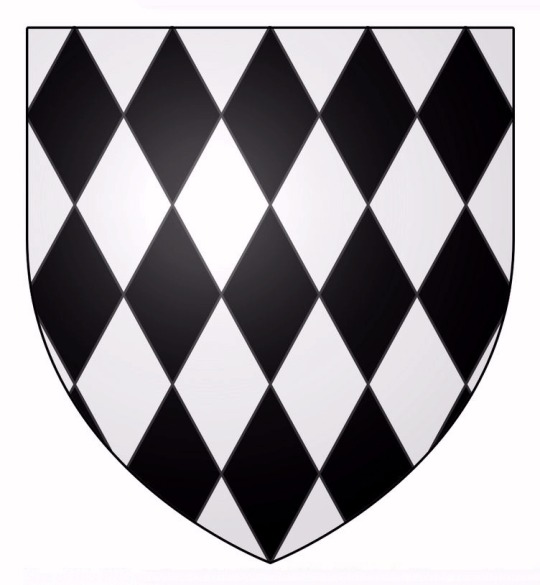
Either way, here’s “Tasting History with Max Miller” (subscribed of course!) having a go at Loseyns, which turn out like mac & cheese with extra spices.

Max ended up eating them with a stick because forks hadn’t been introduced yet, but IMO a better utensil would be the historical eating pick, like one of these.

...or even a spoon, especially if the loseyns were cut small with that in mind.
However eating pasta with the fingers - like many other foods - may have been done in the 1300s; it was certainly recorded in paintings from the 1600s...

...right up to the 1800s...
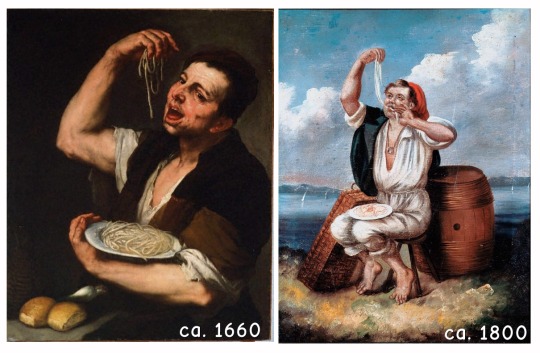
...though I don’t think these were dressed with anything more than oil or butter and some grated cheese, and the potential for messy eating was still pretty high. Eating small pasta rather than dangly strands with the fingers was probably much tidier, especially if diners knew the proper etiquette for doing it...
Finally, here’s something from our own store-cupboard, bought out of curiosity during a recent visit to Polonez in Dublin.

This is pasta cut into little squares; both the front and the back of the pack calls them łazanka...
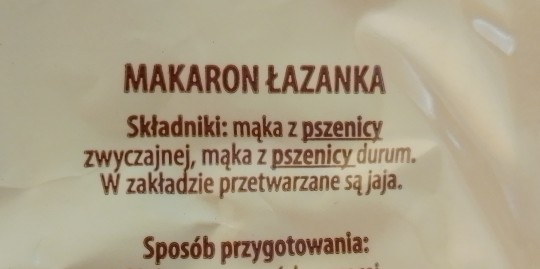
...and according to Google Translate, this just means “pasta noodles”.
However...
Can any followers tell me if "łazanka” has any relationship to “lasagna” or “lozenge”? An enquiring mind wants to know! :->
ETA: @seriously-mike says “...łazanki were brought to Poland in 16th century by queen Bona Sforza (so) the relationship with lasagna might be there.” See his Reply for more info.
ETA (2): A little bell went off in my head about the shapes in the bag and I suddenly remembered seeing them as something call “torn pasta” - the Italian word is “maltagliati“ - which were made using re-rolled scraps of dough from “formal” shapes; more info at that link.
#food and drink#corsican beef ragout#spices in cooking#medieval cooking#food and cooking of the middle kingdoms#French Cooking Academy#Tasting History#lasagne#pasta
154 notes
·
View notes
Text
We know our finalists!
Congratulations to Jan III Sobieski and Jadwiga, they are the ones who will face off in the final bid for the people's crown!
The semi-final losers, Bona Sforza and Stefan Batory, will both have a chance at 3rd place Tomorrow, on the 18th of February, at 5pm UTC+1
Finals coming next week!
Stay tuned for minigames in the meantime!
36 notes
·
View notes
Text
it's so wild to me that there was a dwarven thaig named zygmunt. just zygmunt. like there was a dwarf named zygmunt who had a thaig named after him. which exactly zygmunt bioware were inspired by? there were three kings of poland: two last jagiellonioans, zygmunt i the old (husband of bona sforza) and zygmunt ii august, and then an elected king zygmunt iii vasa, later king of sweden. there's also zygmunt krasiński, one of the three bards: greatest poets of polish romanticism. some important zygmunts to choose from.
or they just wanted a name that started with z, bcos them english-speaking people can't get over our usage of this letter.
idk there just this thaig zygmunt and i'm sure we'll never learn anything more about it. and rn the only info i can't find about it is from the piece of shit shaper with the fake polish name.
#dragon age#thaig zygmunt#lost thaigs#dwarven thaigs#ngl i'd rather bioware not touch polish names at all#than whatever the fuck they did in origins#if anyone found more info about thaig zygmunt anywhere please lmk
10 notes
·
View notes
Text
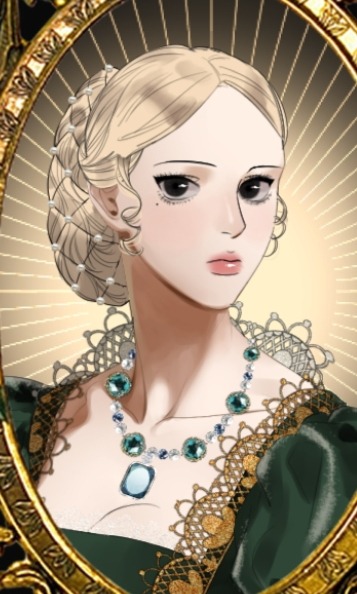
My version of Bona Sforza in picrew me. 🙈This isn't perfect but I would to share with tumblr 🙃. I made her in this page 👇
https://picrew.me/image_maker/227881
#picrew me#Bona Sforza#History#polish history#Polish Queen#Italy#Poland#Italian princess#renaissance#polish rerenaissance#fanart
1 note
·
View note
Photo

Bianca Maria Sforza, Holy Roman Empress, daughter of Galeazzo Sforza and Bona of Savoy by Ambrogio de Predis, 1493-94.
23 notes
·
View notes
Text
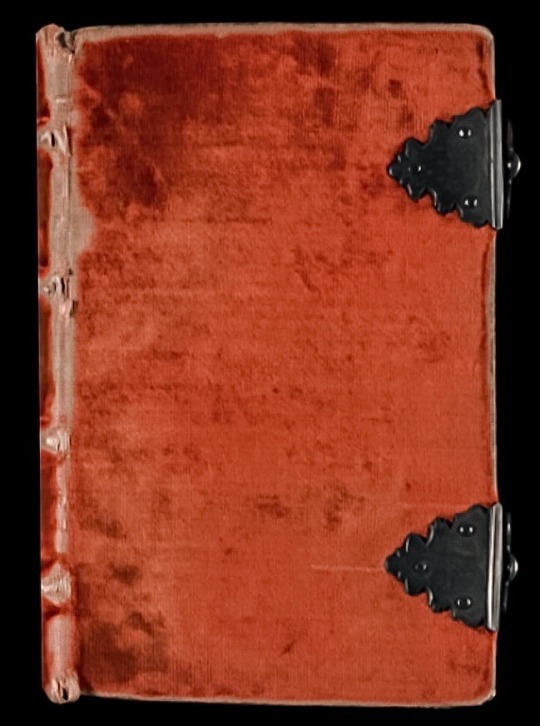
THE SFORZA HOURS (1490-1520) is one of the finest surviving Renaissance manuscripts. It is a Book of Hours — a volume designed for private use, containing the prayers and offices to be said at eight times of the day allotted by the church for prayers. The pages are small, designed to be carried by the owner.
The lavish decorations were painted in two stages: the first around 1490 for Bona Sforza, widow of Galeazzo Sforza, Duke of Milan, and the second for her nephew's widow, Margaret of Austria, Regent of the Netherlands, who inherited the manuscript in 1504. Giovan Pietro Birago, Bona Sforza's miniaturist, had completed and delivered part of the book when a substantial part of the remainder was stolen, never to be returned. Thirty years later, Margaret of Austria commissioned Gerard Horenbout to paint 16 additional miniatures to fill the gaps.
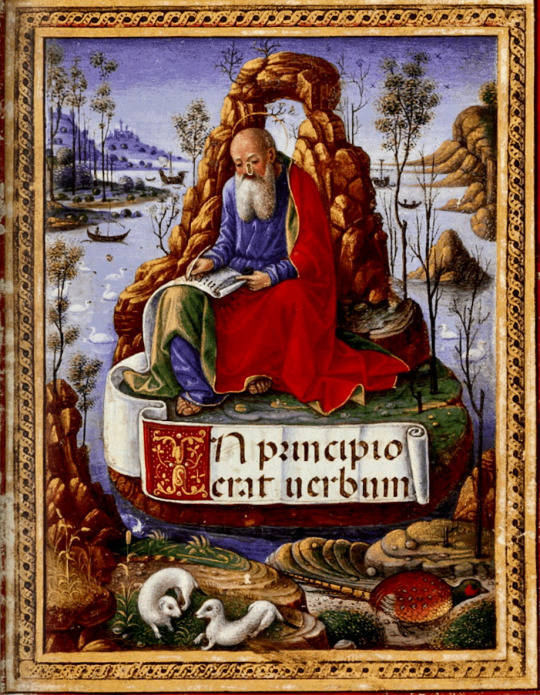
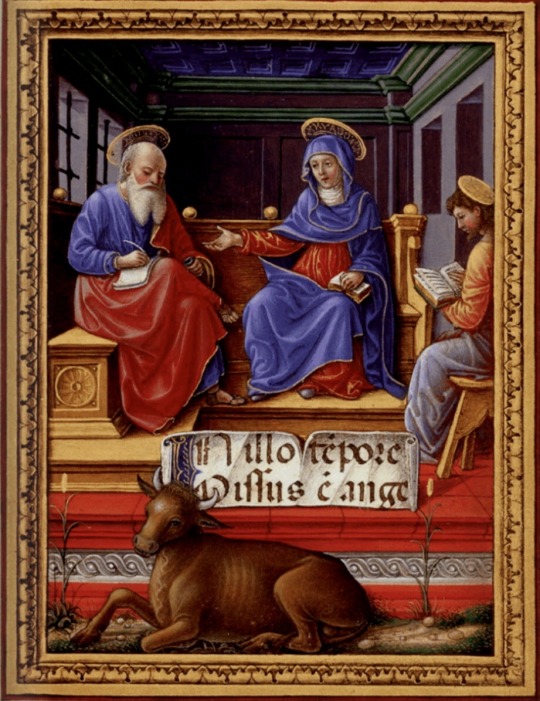
.

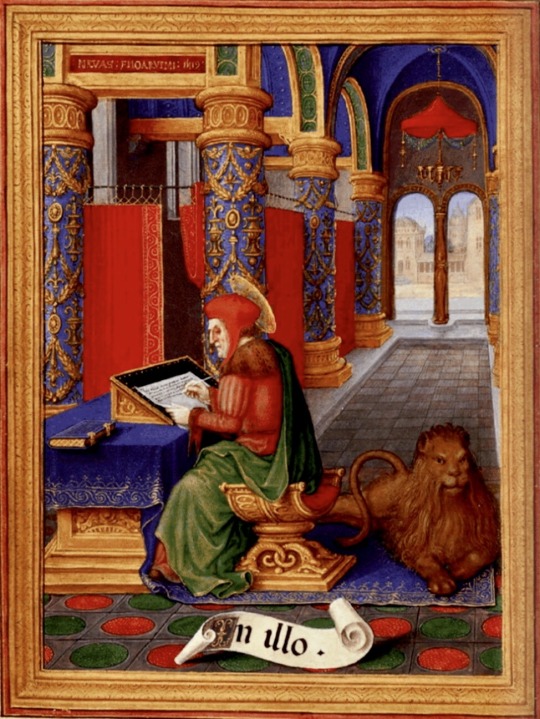
.
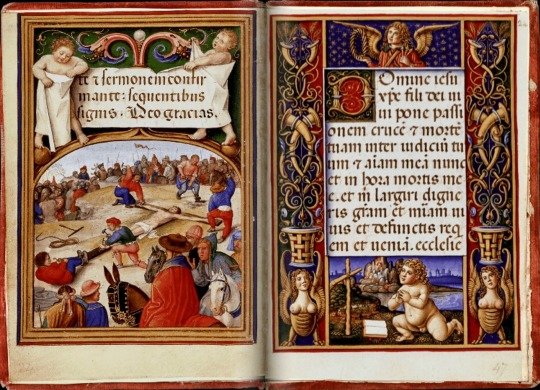
.
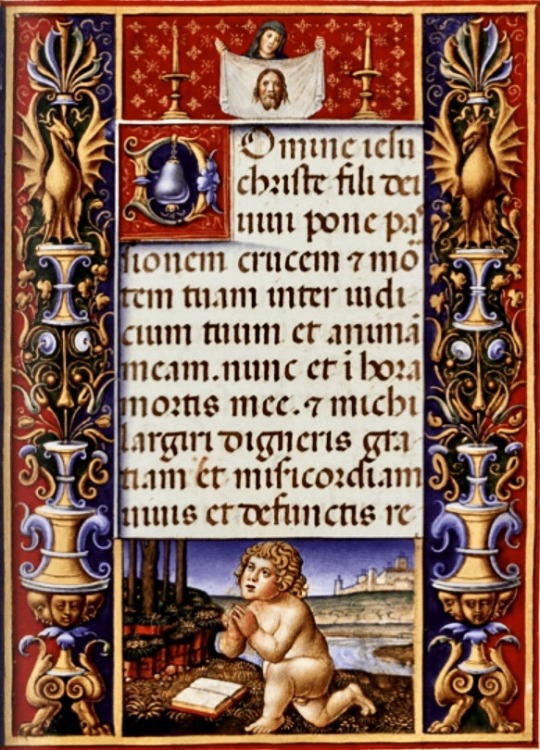

.
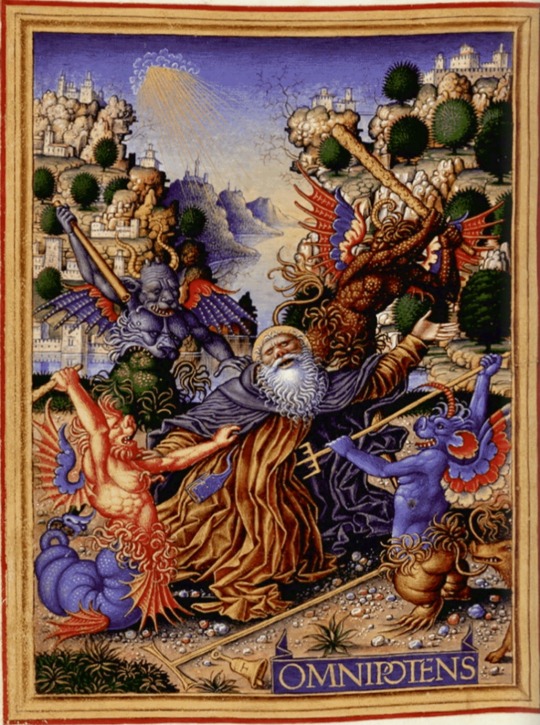

source
#beautiful books#book blog#books books books#book cover#books#illustrated book#book of hours#illuminated manuscript#old books#renaissance#book binding
48 notes
·
View notes
Text
Pls someone draw Belarus as Barbara Radźivił
Anyway, fun fact: the Radźiviłs were for independence of Lithuania (Lithuania plus Belarus) from Poland for which Polish nobility didn't like them a lot. Also because they were rich af.
The gentry unanimously demanded that Barbara be removed and the marriage with Sigizmund dissolved, and the primate expressed his readiness to carry out a divorce and spread the king’s sin to all Poles. (LMAO, bad idea, don't do this to Polish people)
Many people think that Barbara died from Bona Sforza's poison, but most likely, it's just rumours. The expertise says she died from cancer.
A legend has been preserved that Sigizmund allegedly asked Pan Tvardovsky, the famous sorcerer, to summon the spirit of the deceased. He complied with the request, but the king, seeing the ghost, could not restrain himself and tried to touch him, although he promised not to do so. And Barbara's spirit disappeared.

This is the restored copy of her face by anthropologists and Lithuanian sculptor Vytautas Urbonavičius:

#Belarus#barbara radzivil#Belarusian history#Belaruthian history#Poland#Lithuania#hetalia#hws#aph#barbara radziwil
13 notes
·
View notes
